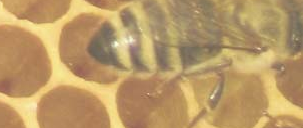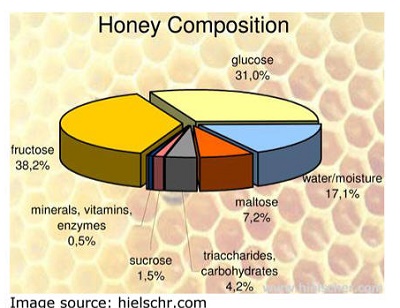
Crystalized Honey: What Causes It and How to Return it to Liquid, While Keeping It Raw
If you keep honey long enough it will crystalize, but it has not gone bad, and can easily be returned to its liquid state. Here's how!
How to re-liquefy crystalized honey
it is easy to turn crystallized honey back to liquid form!
- Heat some water to about 100 F to 110 F (40 C) , about the temperature of hot tap water, which usually does not exceed 125 F. The water should be hot, but nowhere near boiling, since you do not want to melt a plastic container or crack a glass honey jar! If you can't keep your hand in it, it's probably too hot. Using boiling water or too much heat can cause honey to change color (darken) , degrade the flavor and break down enzymes in the honey. In order to liquefy honey, the temperature of the honey should not go beyond 104 ºF - 40 ºC; The bath itself could go up to 115 - 120 F, as it will cool through the glass container. It's the temperature of the honey itself that must not go much above 100F.
- Put the honey jar in the container of hot water.
- The crystals will begin to disappear; usually within an hour, 2 at the most. As the water cools, replace it with new hot water, about every 30 minutes, until the crystals are gone.
Don't use a microwave to heat the honey directly! That cooks its it and it will no longer have the beneficial properties of raw honey! Heating in a microwave can break down compounds like enzymes in honey.
What causes crystallization of honey
Honey is a solution of water and two types of sugar: glucose and fructose. It's actually a saturated solution, even super-saturated solution, meaning, the water has as much of the sugar dissolved in it as it can hold!. Honey is more than 70% sugars and less than 20% water. Typically, honey contains fructose in the 30% to 44% range and glucose from 25% to 40%. The glucose crystalizes a bit quicker than the fructose because glucose is less soluble in water than fructose.
If you have ever grown sugar crystals as a child, you've seen crystallization happen. Unfiltered honey crystalizes sooner due to the suspended particles and fine air bubbles that give the sugar crystals a place to start growing, Honey even crystallizes when it's still in the comb.
It's just a natural physical process in which the sugars in the liquid honey start linking together, and those are crystals!
It hasn't gone bad!
All honey will eventually crystalize, but it is still fine to eat. Honey does not go bad. The extremely high sugar content prevents bacteria from growing in it!
Preventing or slowing honey crystallization
The storage temperature is a major factor in the formation of crystals. The best storage temperature to prevent crystallization is a warm enough temperature (77 F or 25°C to 87 F - 30 C) to keep the honey liquefied
But, realistically, just store it in your cupboard and it it crystallizes you can easily re-liquefy it again using the approach above!
Some types of honey crystalize slower or faster than others, due to differences in their composition. Usually, a higher fructose content means slower crystal formation.
Varieties that crystal slowly
Very Slow to crystalize |
| African acacia |
| Black locust (Robinia pseudoacacia) |
| Cranberry |
| Litchi |
| Longan |
| Milk vetch (Astragalus) |
| Milkweed (Ascelpia syriaca) |
| Sage (Salvia officinalis) |
| Sidr/jujube |
| Tulip poplar |
| Tupelo |
Slow to crystalize |
| Bell heather (Calluna cinerea) |
| Blackberry |
| Borage (Borago officinails) |
| Buckwheat |
| Chestnut (Castania sativa) |
| Citrus (Orange blossom honey) |
| Eucalyptus |
| Fireweed (Epilobium angustifolium) |
| Linden/lime/basswood (Tilia) |
| Maple (Acre spp.) |
| Hawthorn (Crataegus spp.) |
| Nodding thistle (Carduus nutans) |
| Rosemary |
| Sourwood (Oxydendrum arboreum) |
| Spanish Lavender (Lavendua Stoechas) |
| Thyme (Thymus vulgaris) |
Varieties that crystalize quickly
| Fast to Crystalize |
| Alfalfa |
| Apple, pear, plum and cherry |
| Clover (Trifolium) |
| Cotton |
| Dandelion |
| Lavender (Common lavender) * |
| Phacelia (lacy or tansy phacelia) |
| Field bean (Vicia faba) |
| Goldenrod (Solidago) |
| Holly (Ilex aquifolium) |
| Ivy (Hedera Helix) |
| Mesquite (Prosopis spp.) |
| Mustard |
| Rapeseed |
| Raspberry |
| Star thistle (Centaurea solstitialis) |
| Sunflower |
| Wild thyme (Thymus serpyllum) |